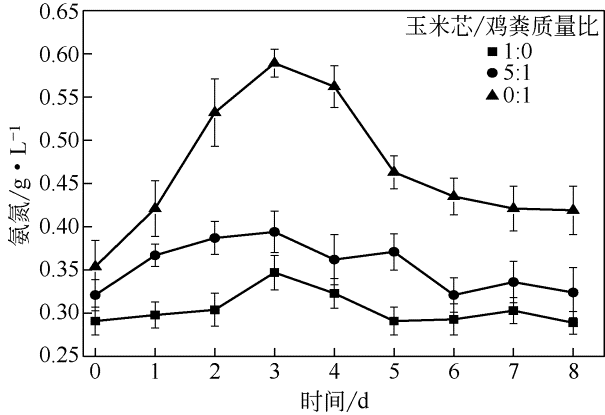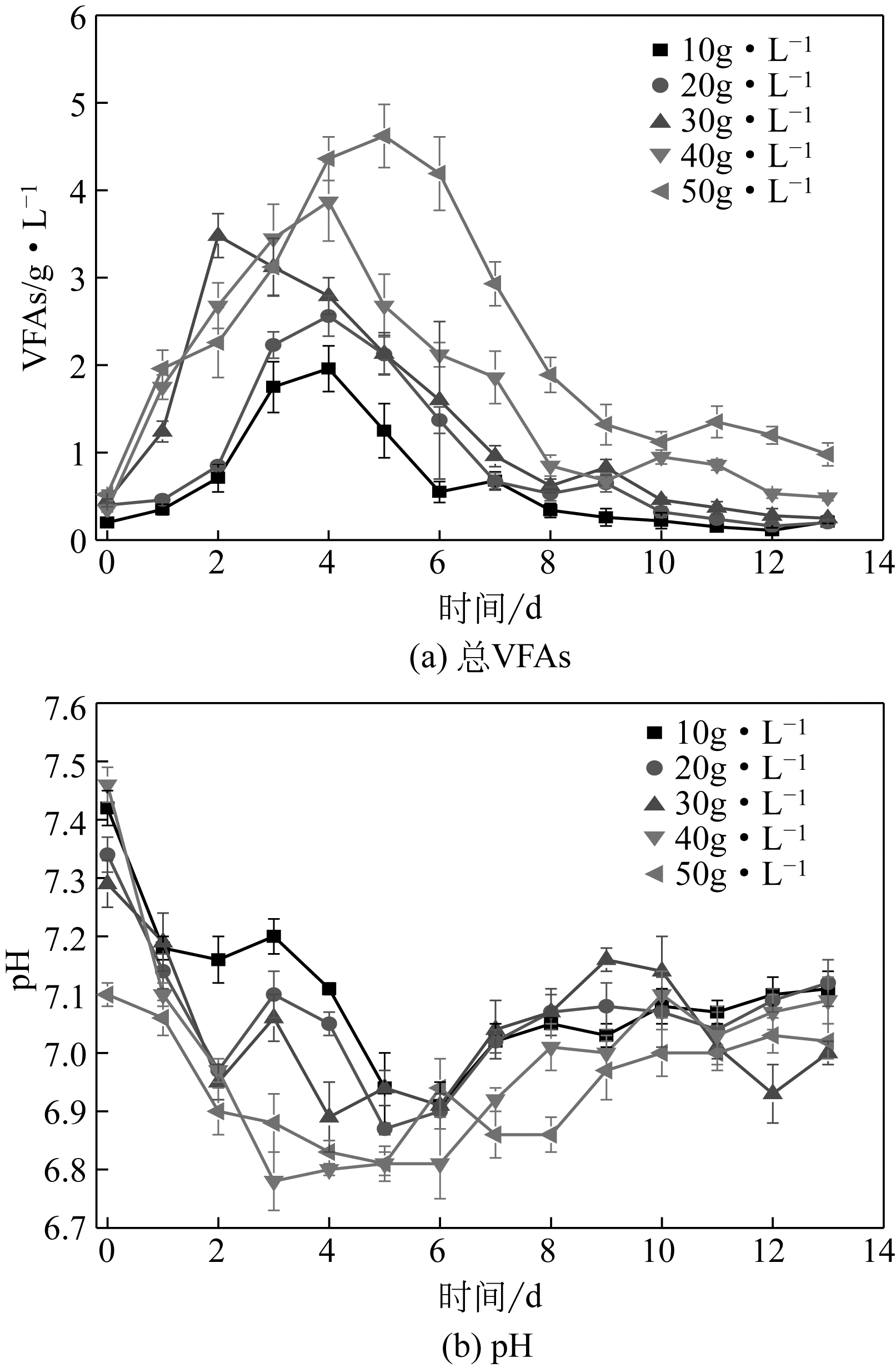| 1 |
董英 . 玉米芯营养价值及其综合利用[J]. 粮食与油脂, 2003, 5: 27-28.
|
|
DONG Y . Nutritional value and comprehensive utilization of corncob[J]. Cereals and Oils, 2003, 5: 27-28.
|
| 2 |
叶节连, 苏有勇, 张京景, 等 . 玉米芯发酵产沼气潜力的实验研究[J]. 化学与生物工程, 2011, 28(4): 53-54.
|
|
YE J L , SU Y Y , ZHANG J J , et al . Experimental study on potential of biogas production from corncob fermentation[J]. Chemistry and Bioengineering, 2011, 28(4): 53-54.
|
| 3 |
朱宁欣, 龙东海, 张英 . 试析鸡粪资源化处理与利用技术[J]. 农业与技术, 2017, 37 (21): 150,163.
|
|
ZHU N X , LONG D H , ZHANG Y . Analysis on chicken manure treatment and utilization technology[J]. Agriculture and Technology, 2017, 37 (21): 150,163.
|
| 4 |
王艳艳, 乔峥, 杨玉锁, 等 . 养鸡场废料厌氧发酵产沼气实验研究[J]. 现代农业科技, 2015 (11): 228-229, 232.
|
|
WANG Y Y , QIAO Z , YANG Y S , et al . Experimental of biogas-yielding by anaerobic fermentation of chicken farm wastes[J]. Modern Agricultural Science and Technology, 2015 (11): 228-229, 232.
|
| 5 |
王峰, 严潇南, 杨海真 . 鸡粪厌氧发酵沼液达标处理工艺研究[J]. 农业机械学报, 2012, 43(5): 84-90.
|
|
WANG F , YAN X N , YANG H Z . Treatment process of anaerobically digested effluent of chicken manure for meeting the discharging standard[J]. Transactions of the Chinese Society for Agricultural Machinery, 2012, 43(5): 84-90.
|
| 6 |
PUYUELO B , PONSÁ S , GEA T, et al . Determining C/N ratios for typical organic wastes using biodegradable fractions[J]. Chemosphere, 2011, 85: 653-659.
|
| 7 |
桂阳, 朱国胜, 韦小庆, 等 . 玉米芯与畜禽粪便混合袋装堆肥发酵技术研究[J]. 江苏农业科学, 2013, 41(8): 344-350.
|
|
GUI Y , ZHU G S , WEI X Q , et al . Study on composting fermentation technology by mixture of corn cob and animal manure[J]. Jiangsu Agricultural Sciences, 2013, 41(8): 344-350.
|
| 8 |
陈广银, 常志州, 叶小梅, 等 . 鸡粪与互花米草沼渣混合发酵产甲烷的研究[J]. 环境科学, 2012, 33(1): 203-207.
|
|
CHEN G Y , CHANG Z Z , YE X M , et al . Methane production by anaerobic co-digestion of chicken manure and spartina alterniflora residue after producing methane[J]. Environmental Science, 2012, 33(1): 203-207.
|
| 9 |
王秀菊, 曾国揆, 刘士清, 等 . 玉米芯厌氧消化产气试验研究[J]. 安徽农学通报, 2006, 12(10): 55-57.
|
|
WANG X J , ZENG G K , LIU S Q , et al . Study on biogas fermentation of corncob[J]. Anhui Agricultural Science Bulletion, 2016, 12(10): 55-57.
|
| 10 |
张淑芳, 潘春梅, 樊耀亭, 等 . 玉米芯发酵法生物制氢[J]. 生物工程学报, 2008, 24(6): 1085-1090.
|
|
ZHANG S F , PAN C M , FAN Y T , et al . Conversion of corhcob into biohydrogen by anaerobic fermentation[J]. Chin. J. Biotech., 2008, 24(6): 1085-1090.
|
| 11 |
PÉREZ-RODRÍGUEZ N , GARCÍA-BERNET D , DOMÍNGUEZ J M . Effects of enzymatic hydrolysis and ultrasounds pretreatments on corn cob and vine trimming shoots for biogas production[J]. Bioresource Technology, 2016, 221: 130-138.
|
| 12 |
徐立生, 蔡裕丰 . 纳氏试剂两种配制方法对氨氮测定的影响比较[J]. 环境科学导刊, 2009, 28(5): 88-89.
|
|
XU L S , CAI Y F . The influence of two preparation methods of nash reagent on the determination of ammonia nitrogen in water quality[J]. Environment and Sustainable Development, 2009, 28(5): 88-89.
|
| 13 |
王晓娇, 杨改河, 冯永忠, 等 . 鸡粪、猪粪与秸秆混合厌氧发酵配比参数优化[J]. 农业机械学报, 2013, 44(11): 133-138.
|
|
WANG X J , YANG G H , FENG Y Z , et al . Optimization of ration of feeding substrates in anaerobic co-digestion of chicken manure, swine manure and straw[J]. Transactions of the Chinese Society for Agricultural Machinery, 2013, 44(11): 133-138.
|
| 14 |
李林海 . 畜禽粪便中的主要养分和重金属含量分析[J]. 南方农业, 2018, 12(23): 126-128.
|
|
LI L H . Analysis of main nutrients and heavy metals in animal manure[J]. South China Agriculture, 2018, 12(23): 126-128.
|
| 15 |
ZHANG C , XIAO G , PENG L , et al . The anaerobic co-digestion of food waste and cattle manure[J]. Bioresource Technology, 2013, 129: 170-176.
|
| 16 |
AKINDELE A A , SARTAJ M . The toxicity effects of ammonia on anaerobic digestion of organic fraction of municipal solid waste[J]. Waste Management, 2018, 71: 757-766.
|
| 17 |
APPELS L , ASSCHE A V , WILLEMS K , et al . Peracetic acid oxidation as an alternative pre-treatment for the anaerobic digestion of waste activated sludge[J]. Bioresource Technology, 2011, 102: 4124-4130.
|
| 18 |
COELHO N M G , DROSTE R L , KENNEDY K J . Evaluation of continuous mesophilic, thermophilic and temperature phased anaerobic digestion of microwaved activated sludge[J]. Water Research, 2011, 45: 2822-2834.
|
 ),Li YANG1,Mingren ZHOU3,Cunsheng ZHANG1(
),Li YANG1,Mingren ZHOU3,Cunsheng ZHANG1( )
)




